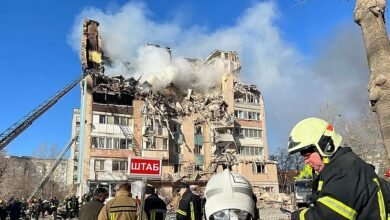Tragedy at Camp Mystic: A Child Safeguarding and Emergency Protection Failure

When families send their children to summer camp, they do so with the belief that those entrusted with their care will protect them with the highest level of diligence. This trust was shattered last July when catastrophic flooding swept through Camp Mystic in central Texas, claiming the lives of 25 children and two counsellors. Among the affected children was 8-year-old Abby Pohl, whose grieving parents have filed a lawsuit, not for compensation, but to demand accountability and prevent another preventable tragedy.
At the heart of this heartbreaking event lies a crucial conversation about child safeguarding, duty of care, and the responsibilities of institutions that serve children, especially in environments exposed to natural hazards.
A Preventable Disaster in a High-Risk Zone
Camp Mystic sits in Kerr County, a region widely referred to as “Flash Flood Alley,” known for its rapid and severe flooding. This alone should have been a strong indicator that the camp needed watertight standards for disaster preparedness and emergency response.
However, according to legal filings, flood alerts were issued as early as July 2, two days before torrential rains sent the Guadalupe River surging into cabins during the early hours of July 4. Despite this, children remained housed in structures close to the riverbank. Confoundingly, reports claim that during this period, camp operators moved lawn equipment out of harm’s way but did not evacuate the children.
If true, this represents a profound breach of the Duty of Care. In safeguarding practice, children’s lives must always take precedence over property, convenience, or tradition.
Critical Safeguarding Failures
1. Inadequate Risk Assessment and Hazard Mitigation
Any institution serving children must conduct thorough risk assessments. In a region with a long-standing history of flash floods, Cabins should have been placed on higher ground, or evacuation protocols should have been triggered immediately once warnings were issued. By reportedly resisting efforts to relocate cabins in the past, camp owners may have knowingly left children exposed to foreseeable danger.
2. Weak Emergency Preparedness
Child Protection in Emergencies frameworks emphasize that early warning systems, evacuation plans, and staff training are not optional; they are life-saving measures. The tragedy at Camp Mystic suggests:
- Insufficient early evacuation procedures
- Poor coordination among staff
- Lack of a practiced, child-centred emergency protocol
The heartbreaking account of Abby’s sisters, who had to walk past their sibling’s cabin during evacuation and were reportedly prevented from rescuing her, reveals a troubling gap in emergency decision-making and flexibility.
3. Failure in the “Last Mile” of Protection
Emergencies demand swift, courageous, and compassionate action. A rigid or confused response can cost lives. Whether due to insufficient staffing, panic, or inadequate protocols, the inability to rescue children trapped in cabins signals a breakdown in the final, most critical stage of safeguarding.
4. Limited Transparency and Accountability
In the aftermath of such a tragedy, best practice requires:
- Full transparency
- Independent investigation
- Immediate policy overhaul
- Engagement with affected families
- Public lessons learned
Instead, statements from the camp’s legal representatives describe the event as “unprecedented,” a characterization difficult to reconcile with prior warnings and the region’s well-documented flood history.
The Human Cost
Beyond the devastating loss of life, there is significant psychological trauma borne by survivors, especially children like Abby’s sisters who lived through the chaos, the fear, and the unimaginable sight of leaving their sibling behind.
Child safeguarding extends beyond physical protection; it includes post-emergency psychosocial support, which should be a mandatory part of any emergency management plan. The long-term emotional consequences of such an event cannot be ignored.
Call to Action
The lawsuit filed by Matthew and Kristin Pohl seeks not revenge, but reform. They are demanding what all parents entrust to institutions that care for their children: transparency, accountability, and change.
This tragedy is a stark reminder that:
- Natural disasters are predictable in many regions.
- Early warnings must be taken seriously.
- Child-centered emergency protocols save lives.
- Institutions must never put property before children.
- Safeguarding requires vigilance, planning, and humility.
No parent should ever receive the call that the Pohl’s did.
No child should ever be left behind because adults failed to act.
Conclusion
The Camp Mystic tragedy is not only a story of devastating loss, it is a warning and a lesson. It represents the consequences of insufficient safeguarding, ignored warnings, and inadequate preparedness. Every child deserves protection. Every institution must rise to that responsibility.





